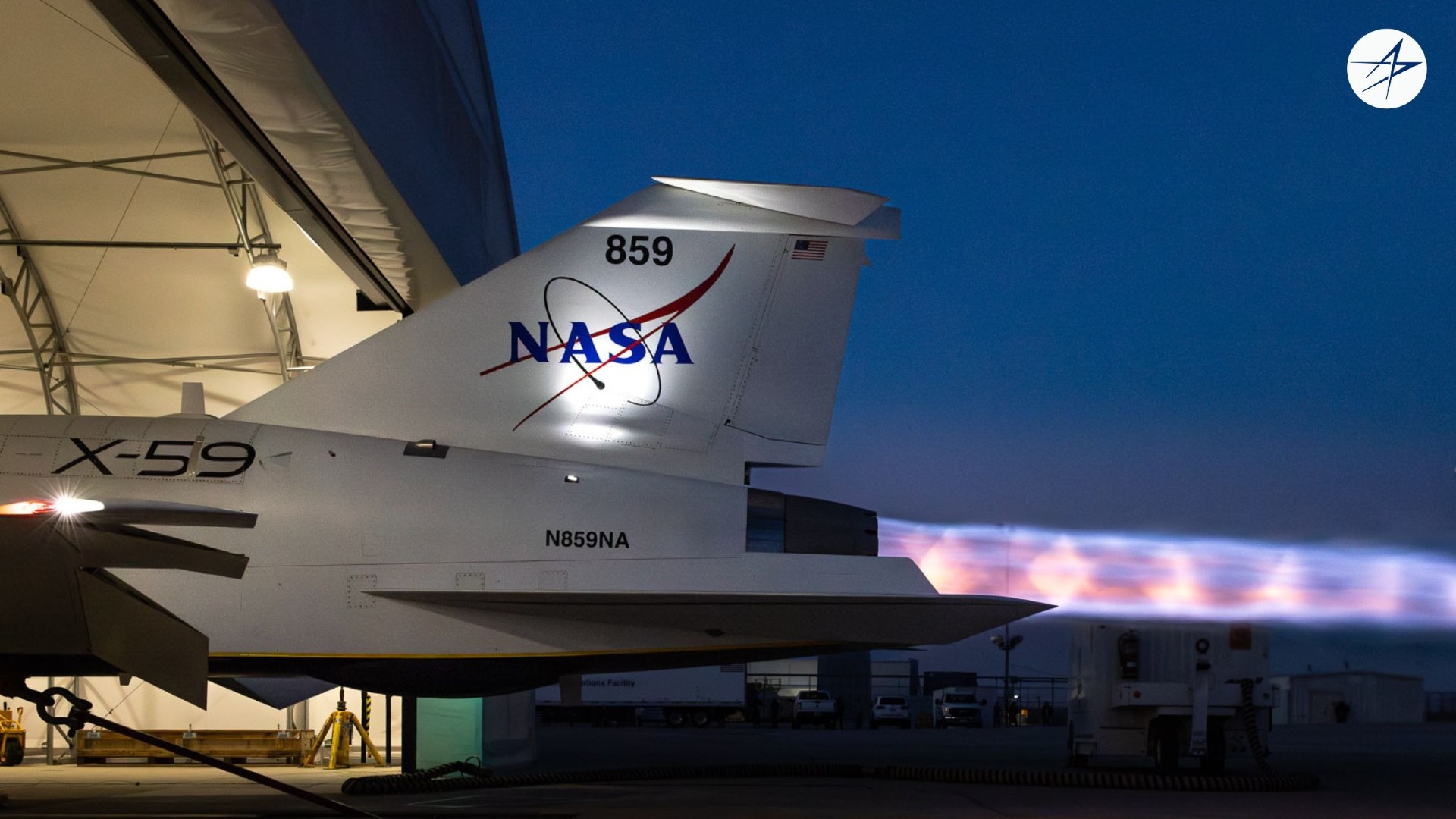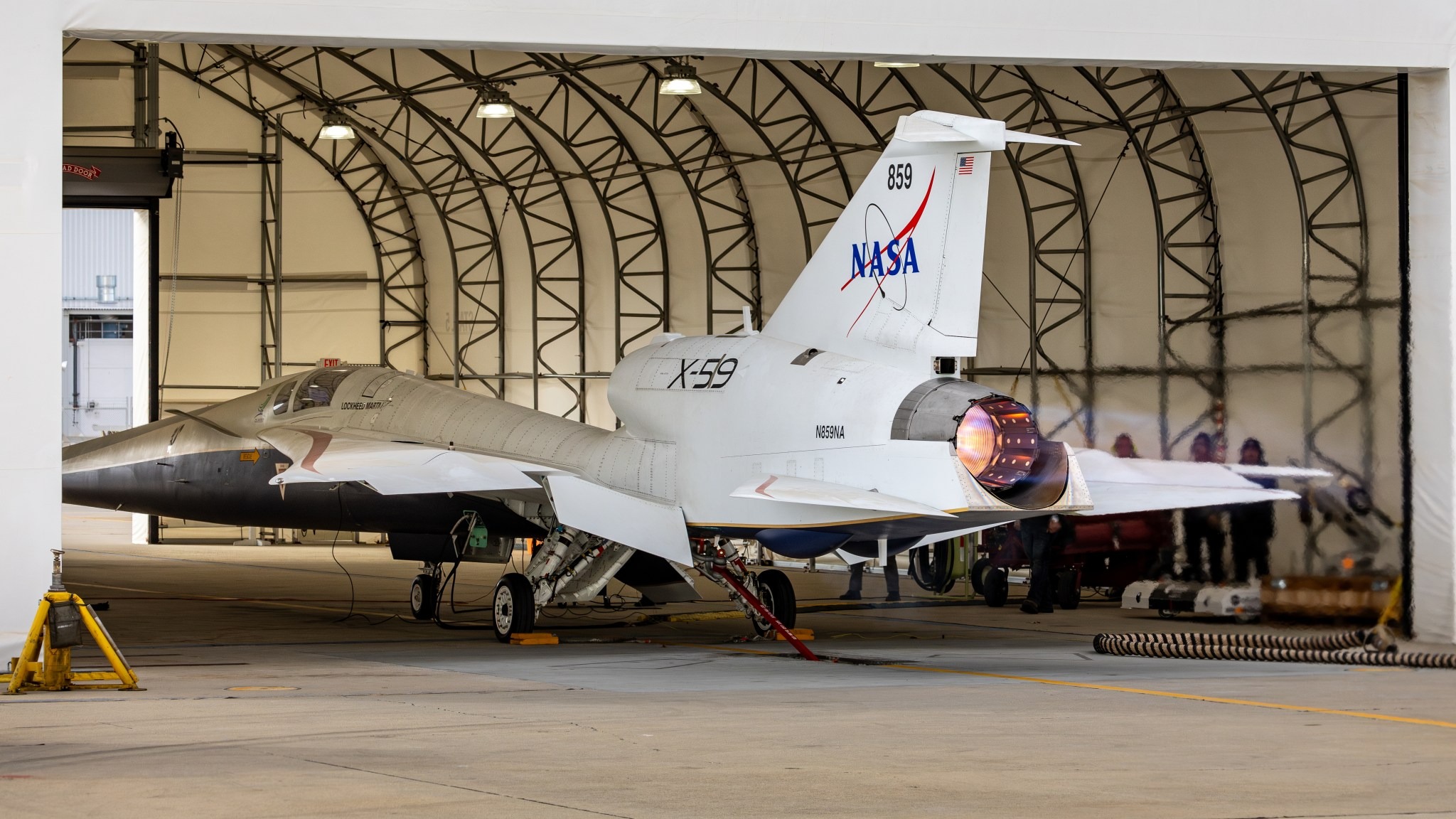
NASA's X-59 supersonic jet looks ready for some serious speed in new photos.
Lockheed Martin has been building the X-59 for NASA, as part of a project to develop a "quiet" supersonic aircraft that can break the sound barrier without producing the thunderous sonic booms typically associated with faster-than-sound flight.
Both NASA and Lockheed Martin recently released photos of the X-59 "quiet" supersonic jet conducting tests of its afterburner, a system that injects extra fuel into the hot exhaust of a jet engine. "The X-59 — precision, power and engineering excellence, all on full display," Lockheed Martin said in a post on X accompanying a new photo of the aircraft.
In the new photos, the X-59 sits in a hangar at Lockheed Martin's storied Skunk Works facility in Palmdale, California while performing afterburner engine run tests.
The tests were aimed at verifying the performance of the X-59's General Electric F414-GE-100 jet engine, a modified version of the engine used in Boeing's F/A-18 Super Hornet flown by the U.S. Navy.
"Running the engine, an F414-GE-100, with afterburner will allow the X-59 to meet its supersonic speed requirements. The test demonstrated the engine's ability to operate within temperature limits and with adequate airflow for flight," NASA wrote in a statement in December 2024 along with a photo of an afterburner test.
The tests also verified how well the engine performed with the other subsystems on the aircraft, the agency added.

When NASA and Lockheed Martin complete ground testing and verify the X-59's flight readiness, the jet will begin flight testing. During the flight test campaign, NASA will fly F-15s behind the X-59 equipped with specially designed air probes that will measure the shockwaves produced as the X-59 breaks the sound barrier.
From there, the agency plans to fly the X-59 over select residential areas in the United States in order to gather data on the public's reaction to and perception of the quieter "thumps" it produces when in supersonic flight.
The X-59 was developed as part of NASA's Quesst program (Quiet SuperSonic Technology), which aims to develop aircraft that can break the sound barrier without producing thunderous sonic booms.
Supersonic flight over populated areas has been prohibited for decades because of how disruptive the booms are to the public on the ground. If successful, programs such as Quesst could help get supersonic flight approved once again for commercial purposes, greatly reducing flight time for a wide range of civilian applications.







